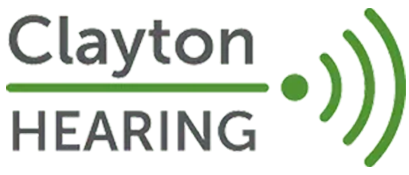Ear Wax Removal
Hervey Bay
- Government-Accredited Hearing Provider
- No Out-of-Pocket Costs for Eligible Clients
- Registered DVA Service Provider
- Gold Standard Best Practice Clinic
Request a Callback
Thank you for contacting Clayton Hearing.
We will get back to you as soon as possible.
Oops, there was an error sending your message.
Please try again later.
Hervey Bay Ear Wax Removal
At Clayton Hearing in Hervey Bay, we offer professional ear wax removal services to support ear health, relieve discomfort, and restore hearing clarity. Built-up wax can cause symptoms like muffled hearing, ear pressure, ringing, and in some cases, dizziness or irritation.
Wax buildup is also a common reason for hearing aid malfunction. It can block sound output or interfere with microphones, making regular wax checks especially important for clients who use hearing devices.
Many people come to us unsure whether their hearing has changed or if wax is the cause. A build-up of ear wax can lead to temporary hearing reduction, which is why a hearing test may also be recommended before or after removal to establish a baseline.
Our approach is safe and tailored to each person. We use clinical tools and visual inspection to determine the best method of removal—whether micro-suction, softening drops, or manual extraction.
We aim to relieve symptoms while protecting the delicate structures of the ear. Whether you're experiencing frequent blockages or simply want peace of mind, we're here to help. To book your ear wax removal appointment, call
07 4184 2043.
Start Your Hearing Care Journey
How the Process Works
We begin every appointment by examining the ears with an otoscope. This helps us assess the amount and type of wax, along with the overall condition of the ear canal and eardrum.
Based on what we find, we choose the most suitable removal method. This may include gentle micro-suction, softening drops to loosen hardened wax, or manual removal using small instruments.
We explain each step clearly and check comfort levels throughout the process. Clients often notice immediate improvement in hearing and a reduction in pressure or discomfort.
We also offer follow-up advice and guidance on when to return for routine management. This is especially important for people who experience regular wax buildup or use hearing aids.
Leaving wax untreated can affect day-to-day communication and overall quality of life. That’s why we focus on both symptom relief and long-term prevention.
The entire process is safe, straightforward, and tailored to your individual ear health needs. Addressing wax buildup early helps reduce infection risk, preserve hearing clarity, and keep hearing aids functioning properly.
Frequently Asked Questions
What are the signs of ear wax buildup?
Common symptoms of wax buildup include muffled hearing, a feeling of fullness in the ear, ringing or buzzing (tinnitus), earache, or difficulty using hearing aids. Some people may also experience itching or dizziness. If left untreated, impacted wax can worsen and potentially lead to temporary hearing loss or irritation of the ear canal.
Is it safe to remove ear wax at home?
Most at-home methods, like cotton buds or ear candles, are not recommended and may cause more harm than good. Cotton buds can push wax deeper or damage the ear canal, while ear candles can be unsafe and ineffective. It’s best to have wax removed by a trained professional who can safely assess the blockage and use clinically approved techniques.
How is ear wax removed professionally?
Clinics use several methods depending on the wax and individual needs. Micro-suction is a common technique that uses gentle suction to extract wax. Manual removal with small instruments may also be used. In some cases, wax-softening drops are applied first. Each method is chosen based on safety, comfort, and the amount or type of wax buildup.
How often should I have ear wax removed?
The frequency varies depending on the person. Some individuals never require removal, while others—especially hearing aid users or people with narrow ear canals—may benefit from cleaning every 6 to 12 months. A hearing care professional can assess your ear health and advise whether routine wax management is necessary based on your specific needs.






